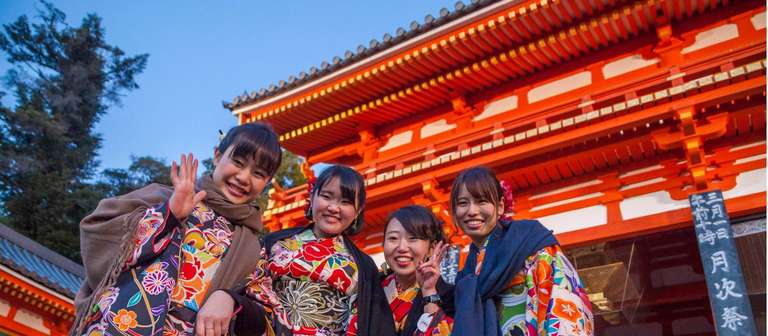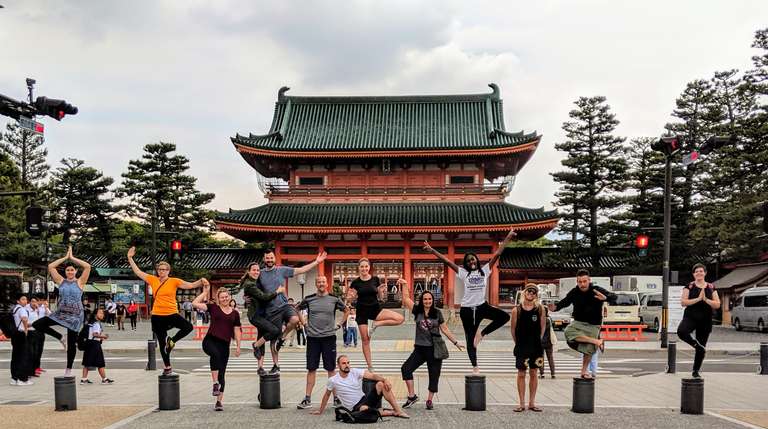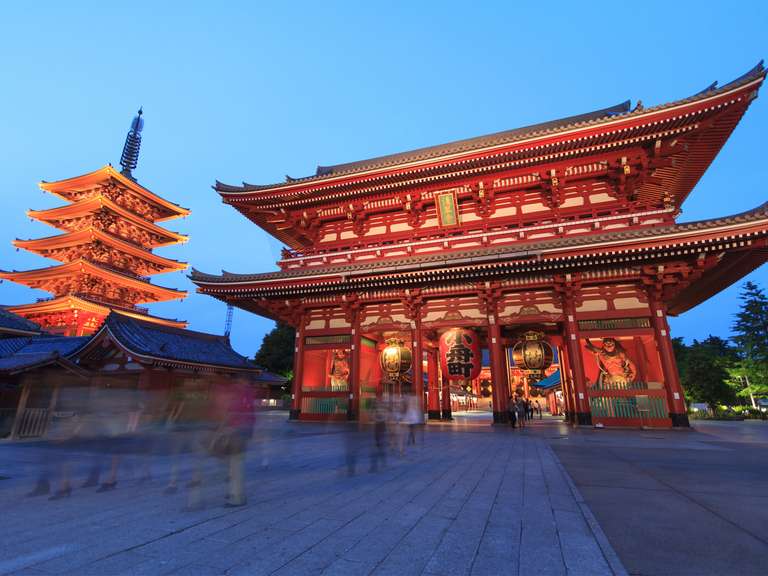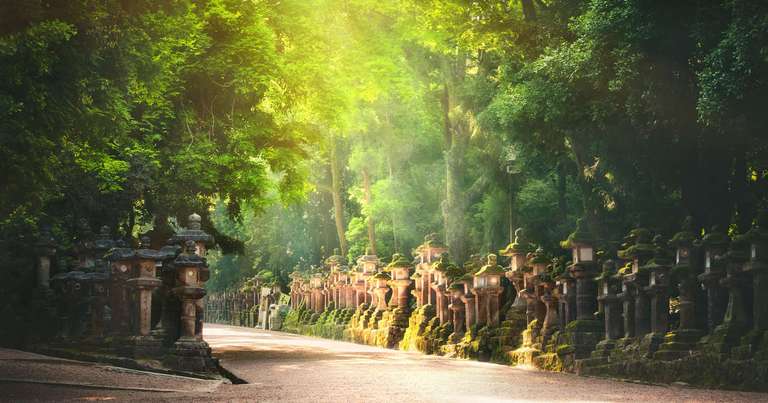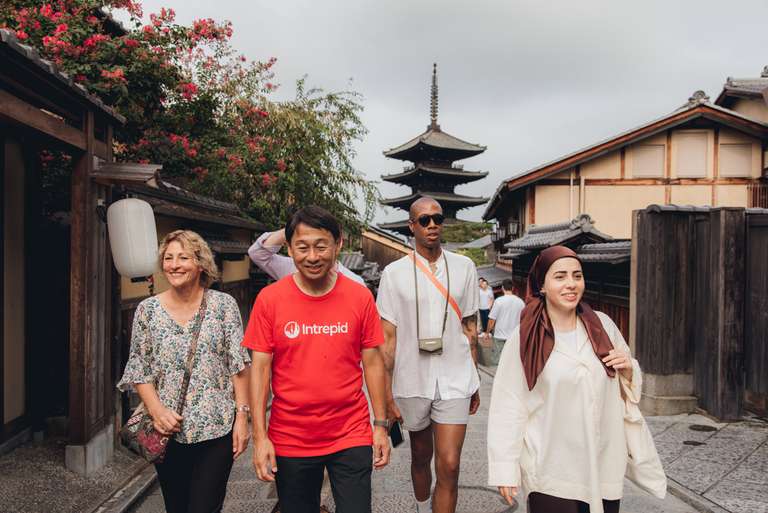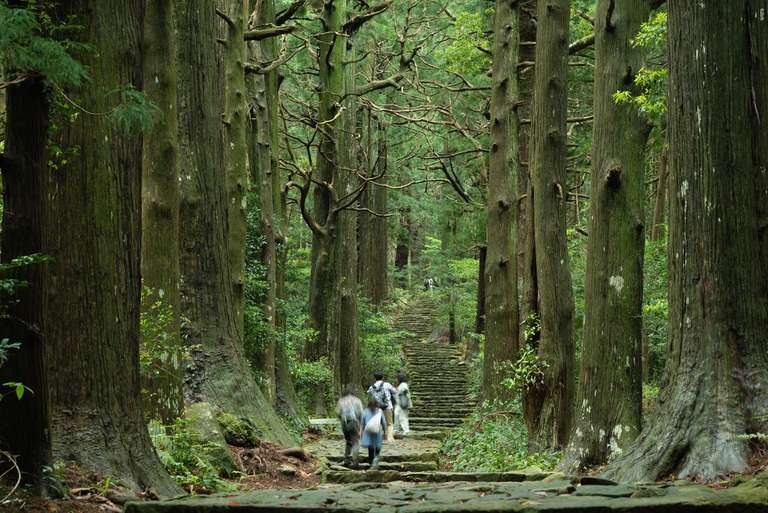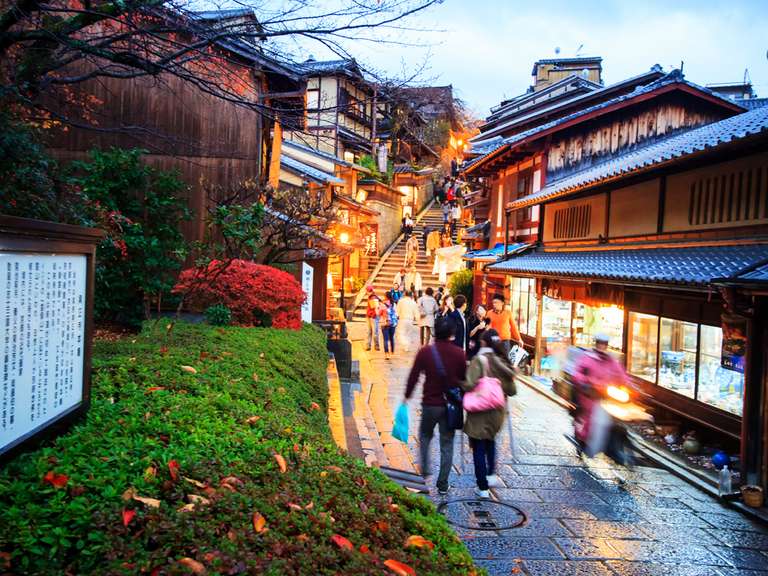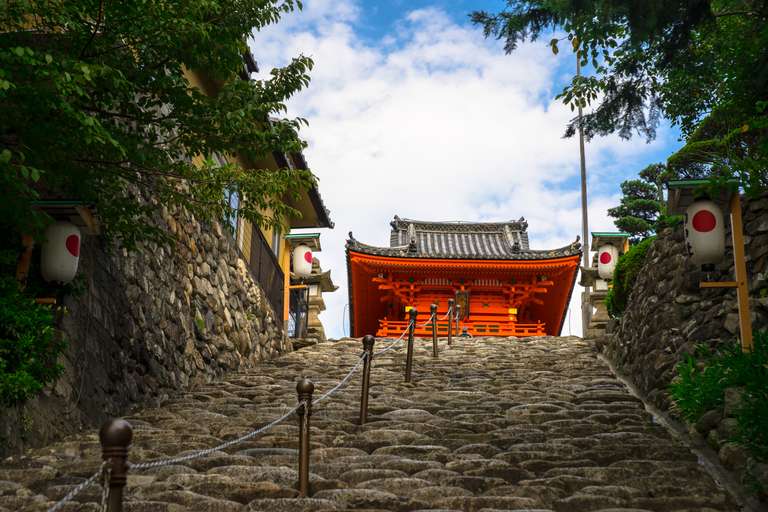Walking the Kumano Kodo Trail: 5 Popular Routes

- Saadet A
- From
- Saadet A
- From
- Jeremy T
- From
- Tayla T.
- From
Popular Kumano Kodo routes
The network of Kumano Kodo trails is quite extensive and you’ll find many different Kumano Kodo hikes to enjoy, each varying in duration and difficulty. Below we’ve listed the most popular routes, with a brief description of each trail along with the highlights and lowlights, to help you pick the best route.
1. Nakahechi trail – Kumano Kodo in 3 days
The Nakahechi route of the Kumano Kodo pilgrimage network is possibly the most popular of all the trails and has been used since the 10th century. The well-marked route is suitable for self-guided trekking and starts from Kii-Tanabe on the west coast, and makes its way across to Hongu.


Quick facts
|
Distance: |
70 kilometers |
|
Difficulty level: |
Intermediate. The walk reaches a maximum altitude of 836 m which novice walkers may initially find challenging. Otherwise, the trail is fairly easy. |
|
Hiking duration: |
3 days at 5-7 hours per day. |
| Trail type: | Ancient stone steps, hilly, forested terrain and rural landscapes. |
Highlights:
- Take a relaxing dip in the hot springs at Yunomine Onsen. The hot springs village is at the end of Dainichi-goe route.
- Don’t miss the spectacular Kumano Hongu Taisha shrine! The shrine is listed as a UNESCO World Heritage site and is quite a sight to behold.
Lowlight:
- Because of its popularity, the trail can be incredibly busy, and much like a pilgrimage, you will be walking in crowds.
Travel tips:
- You can ship your luggage to the hotel you will be staying at by booking the services through the Kumano Kodo shuttle service. Note that pick-up and delivery are only for accommodations booked via the Kumano Travel Community Reservation System.
- Book your stay at least a month in advance using the official Kumano website.
- Carry high-power hiking snacks and food as snack prices can get expensive along this popular trail.
2. Ohechi trail – Kumano Kodo in 3 days
The Ochechi trail follows the coast from Tanabe to Nachi Taisha and was once walked by over 30,000 people each year! Today the path is the most popular way to visit the Nachi Taisha shrine. As the walk is along the coast, it is particularly enjoyable in the summer months with the cooling sea breeze.
Quick facts
| Distance: |
92 kilometers |
|
Difficulty level: |
Easy. The route is relatively flat and easy and never strays too far from civilization. |
| Start/end-point: |
The trail starts at Tanabe City and ends near the Naci Taisha at the Mrozu Station. |
| Hiking duration: | 3 days at 5–7 hours per day. |
| Trail type: | Forested mountain passes, paved roads, highways, rice paddies. |
Highlights:
- The views from the passes are incredibly scenic and offer spectacular glimpses of the Pacific Ocean — make sure you stop at the ramen shack by the beach for a bite to eat!
Don’t miss out on a chance to dine at Kanteki Izakaya, an authentic Izakaya restaurant serving delightful Japanese dishes.
Lowlight:
- The trail has virtually disappeared due to modern infrastructures including roads, which may be disappointing.
Travel tips:
- This is a great trail for photography enthusiasts and was once sought out by poets and painters for inspiration.
- The route is a coastal one and you may find it humid. Dress appropriately.
- Keep abreast with train and bus schedules— you can cover parts of the Ohechi trail by public transport if you need a break.
3. Kohechi trail – Kumano Kodo in 4 days
The Kohechi trail connects Kumano with Koyasan and was used largely by Buddhist monks traveling from the temple complex of Mount Koya. Today the route is tackled by well-seasoned hikers who are familiar with rough and isolated terrain.

Quick facts
|
Distance: |
70 kilometers |
|
Difficulty level: |
Demanding. You’ll climb through rugged forest and up steep mountain passes gaining a maximum altitude of 1,719 m. It’s considered one of the toughest trails of Kumano Kodo for its incline and duration. |
|
Start/end-point: |
The hike begins at the Wakayama Prefecture in Koyasan or Mount Koya and ends at the Hongu Taisha. |
| Hiking duration: | 4 days at 6–8 hours per day. |
| Trail type: | Steep, forested peaks, narrow cliff pathways, ancient gravesites. |
Highlights:
- Don’t miss the teacups dotted along the trail. If you see one it means there’s a freshwater spring there, so fill up your bottles and have a drink!
- The route cuts through the very heart of the Kii Peninsula allowing you to enjoy the very best of the area including Koyasan and the Kumano Hongu Shrine.
Lowlight:
- Inns on the route are few and far between, with most walkers having to go off-piste to find a place to sleep.
Travel tips:
- The trail is pretty isolated, so only experienced hikers are encouraged to embark on the journey.
- The trail is typically closed from mid-December to mid-March owing to the possibility of snow in the northern sections.
- Keep in mind that this route is typically windy, rainy, and foggy, so pack accordingly.
4. Omine Okugake – Kumano Kodo in 5 days
Don't miss the 75 scared sites containing small Buddhist shrines and images dotted along the trail. Connecting Kumano with Yoshino, the Omine Okugake route is a challenging pilgrimage up mountains and along remote stretches of forest. The route was primarily used by followers of the Shugendo mountain worshipers.

Quick facts
| Distance: | 170 kilometers |
| Difficulty level: | Difficult. This route is not recommended for novice hikers as parts of the trail run along high mountain ridges with rough and uneven paths underfoot. |
| Start/end-point: | The trail starts at Yoshino and ends at the Kumano Hongu Taisha. |
| Hiking duration: | 5 days at 8-9 hours per day. |
| Trail type: | Rugged paths, steep peaks, lush forests. |
- As you walk the trail, visit the three sacred shrines in Wakayama including the Okunoin Temple, Kumano Nachi Taisha, and the Kongobuji Temple!
- Pay your tribute to the 75 sacred sites which are well-preserved shrines and Buddhist images dotted along the 170 km trail.
Lowlight:
- The route is rather long and dangerous as it passes along high mountain ridges and shouldn’t be attempted by the inexperienced or the unprepared.
Travel tips:
- Keep cash handy. Donations are requested for using the rest-house, about 2,000 yen or more
- Long considered sacred, women are not allowed on the path up to Mt Omine and the Ohminesanji Temple.The locals may encourage you to try edible grasses, mushrooms, and berries along the trail. Don’t try them unless you’re an expert!
- Drinking water may be scarce on the trail, so fill up whenever you can, and carry enough food for many days as beyond Yoshino town there are no restaurants or shops.
5. Iseji trail – Kumano Kodo in 7 days
The Iseji trail runs along the east coast of the Kii Peninsula and was used during the Edo period by pilgrims visiting the Ise-Jingu Shrine. It is still the most popular route to Ise-Jingu shrine and the Kumano Sanzan. There is a real mix of terrain on this walk including forests, rice fields, beaches, and mountain passes.
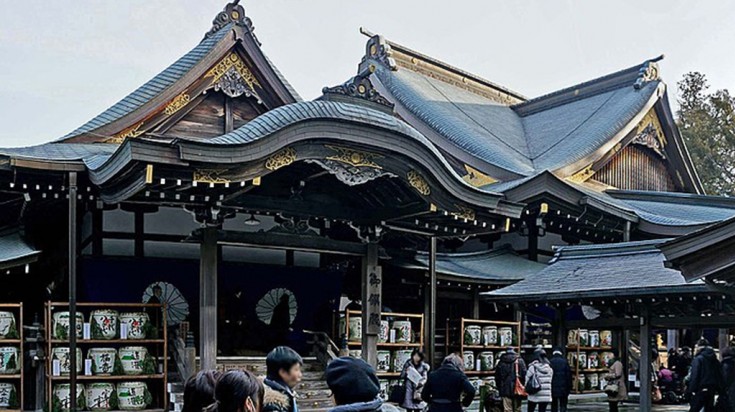

Quick facts
|
Distance: |
170 kilometers |
|
Difficulty level: |
Intermediate. This route involves walking on cobbled paths in places that can be difficult on the ankles. Otherwise, the route is rather pleasant. |
|
Start/end-point: |
The trail starts from the Ise shrine in Mie Prefecture and ends at the Hayatama Taisha Shrine. |
|
Hiking duration: |
7 days at 4–6 hours per day. |
| Trail type: | Steep mountain passes, cobbled path stones, bamboo forests, and sandy beaches. |
Highlights:
- Pay a visit to Ise-Jingu shrine which is considered to be the most important shrine in Japan and where the sun goddess, Amaterasu Omikami, is enshrined.
- Follow the Iseji seaside route known as Hama-Kaido, which is particularly scenic and offers a chance to take a dip in the ocean if you’re feeling brave!
Lowlight:
- The trail is quite challenging due to multiple hills and cross paths, novice hikers may find it tiring.
Travel tips:
- Wear waterproof hiking boots as some parts of the trail connect small fishing villages.
- Explore the tiny towns whenever you can and see a part of Japan few tourists see.
- Get familiar with onsen towns. Onsens are hot springs with bathing facilities and traditional inns around them.

How to get there
Accessing the Kumano Kodo trail is relatively easy (so long as you don’t mind a long train ride), but varies depending on which part of the trail you’d like to visit and which city you’re coming from. Kumano is easily accessible from the cities of Osaka, Kyoto, Tokyo, and Nagoya by rail and bus. It’s also accessible from Kansai International Airport and visitors are advised to purchase a rail pass and ride the Shinkansen trains.
The Japan Rail Pass is a super cost-effective rail pass used predominantly for long-distance rail travel in Japan. The pass is only granted to foreign tourists and offers unlimited use of JR trains. You can choose whether you want it validated for 7, 14, or 21 days, costing you USD 517, USD 828, and USD 1035 respectively.. There’s also an option to upgrade to ‘Green Car’ JR Pass which is equivalent to first-class and has additional facilities.
Best time to visit
The Kumano Kodo trails are open year-round, so the best time to visit depends on what type of weather you enjoy walking in.
March and April are popular months to visit due to the cherry blossoms flowering, however, it can be quite busy so make sure you book your accommodation well in advance. If you can handle the heat and the crowds from May to September, you’ll be rewarded with golden lighting and extra daylight for more hiking!
October and November bring autumnal foliage, colorful forests, and mild temperature. If you don’t mind the odd bit of rainfall, this is the perfect time for a colorful and cool Kumano Kodo walk!
December to February bring with them the slight chance of snow on the Nakahechi route and hiking the trails at this time of year is only recommended for experienced trekkers due to the cool temperatures and short daylight hours. Note that most accommodation is shut between Christmas and mid-January too.
Accommodation
When it comes to accommodation on the Kumano Kodo trail, you’ve got a couple of options to consider ranging from small-town hotels to off-the-beaten-path ryokans (traditional Japanese inns).
- Hotels: There aren’t many hotels on the trails but you can definitely count on one being at the start and end of your trip. Prices start as low as USD 25 and go up to USD 162 per night.

- Ryokans and minshukus: The majority of the time on the trail you’ll be staying in ryokans or minshukus, traditional Japanese-style inns that feature basic décor but are full of character. In both these types of accommodation, you must remove your shoes before stepping into your room. Prices range from USD 45 – USD 250 per night.
- Hostels: Hostels are more prominent in the larger towns along the Kumano routes. Prices tend to be on par with ryokans and minshukus, if not a little more expensive. Prices range from USD 40 – USD 90 per night.
- Shukubo: Some temples on the Kumano Kodo route offer accommodation to passing travelers. The facilities here can sometimes be as good as ryokans, making them a popular and cheap option for lodging. Prices range from USD 60 – USD 150 per night.
REST STOP AND FOOD
Trust the Tanabe City Kumano Tourism Bureau to arrange all your stays and rest stops as it runs the Kumano Travel Reservation System. Through this system, you can book accommodation, luggage shipments, and other related services. The booking service is fairly easy to use and also provides travelers with comprehensive maps and brochures about the area.
All hotels and places for accommodation serve hearty dinners and breakfasts. Along the trail, however, you may not find many options for proper meals. Keep energy bars, nuts, and other high-energy snackables handy with you at all times. Once you start the hike, the closest town with a vending machine or place to eat is probably the Chikatsuyu.
WHAT TO PACK
- A well-fitting pair of hiking boots that will also keep your feet dry on wet, muddy paths. Look for a lightweight and waterproof pair.
- Invest in some wet-weather clothes as rain patterns could sometimes be erratic.
- The entire trail will expose your feet to a range of diverse trail types. Bringing a pair of walking poles along makes the walk easier.
- Carry tons of cash in all denominations. ATMS are far and few between, and accommodation spots may not accept cards.
Transportation
Many travelers embarking on the Kumano Kodo trail prefer the popular Nakahechi route. The trail starts at Takjiri, located 15 km west of Tanabe, and functions as the main entry point for the Kumano Kodo. You can access it by express trains from Kyoto to Osaka. Purchase a Japan Rail Pass for ease of travel.
Travel tips
- Buy snacks for the trail in supermarkets in Kyoto or Osaka before starting the journey.
- Leave your luggage in storage before starting the trails. At some larger train stations, you will be able to find storage offices.
- Ryokans or other Japanese-style accommodation has its own set of rules. Practice or learn beforehand and stay respectful.
Hiking the Kumano Kodo Trail FAQs
1. When is the best time to hike the Kumano Kodo trail?
Kumano Kodo is a year-round hiking destination. Wakayama is relatively in the south and receives little to no snowfall. If you want to avoid crowds, you should visit during the wintertime spring and autumn are considered great times to visit. Avoid June, typically considered the rainy season.
2. Are the stay options comfortable?
Yes, most of the accommodation spots are reasonably affordable, clean, and well-priced. However, if you’re used to soft, fluffy pillows, bring yourself a neck pillow.
3. Do people speak English on the trail?
English is not widely spoken by the locals, so you may need to make hand gestures to explain your needs or wants. Carrying a pocket dictionary will be helpful.
Among various trekking trails in Japan, the Kumano Kodo trail is one of the most challenging, but it is also very rewarding. Whichever trail you choose, get ready to enjoy the ultimate outdoor Japan tour as you immerse yourself in rural life and culture, and soak up the very best of Kii Hanto peninsula!

